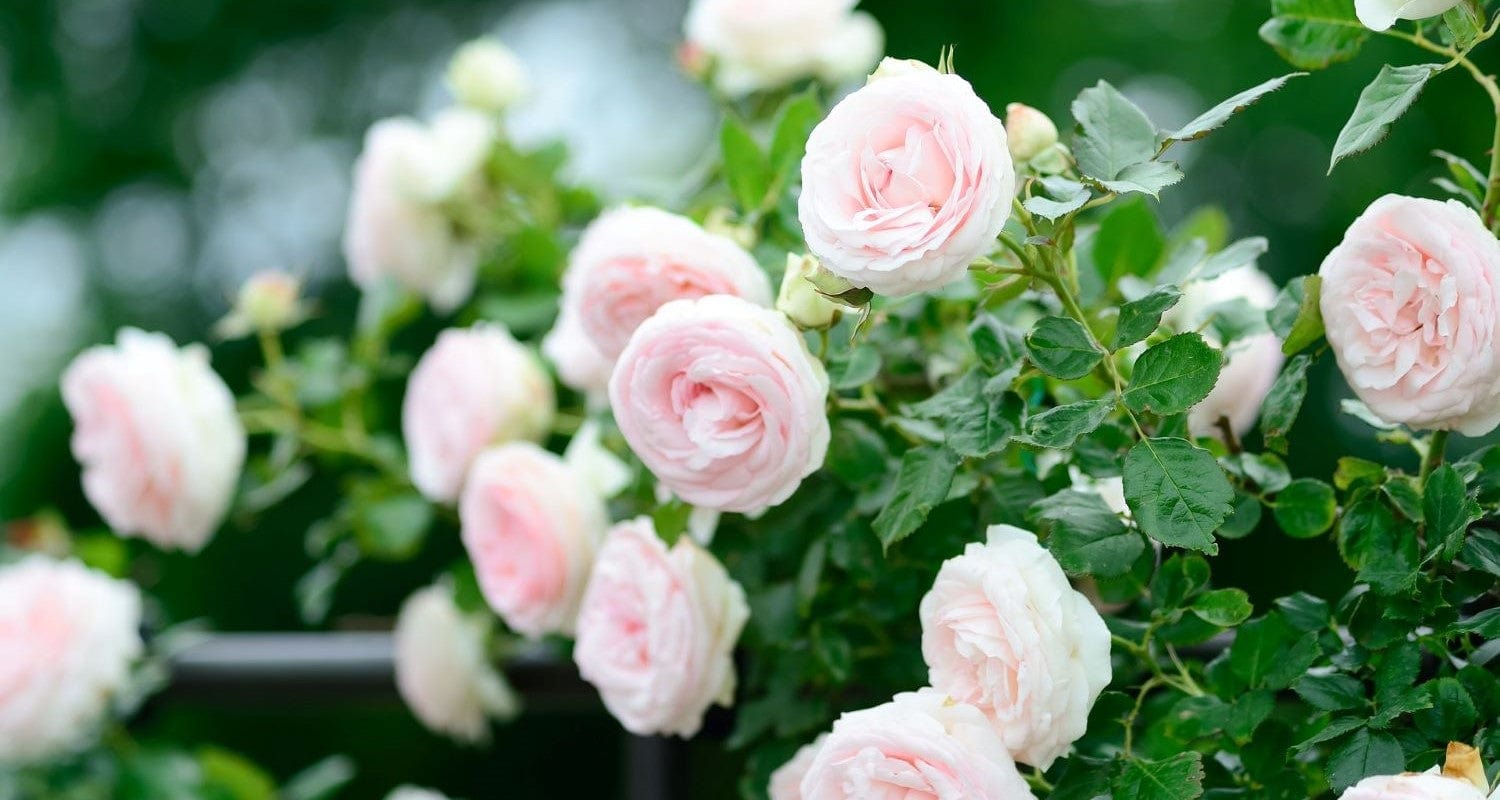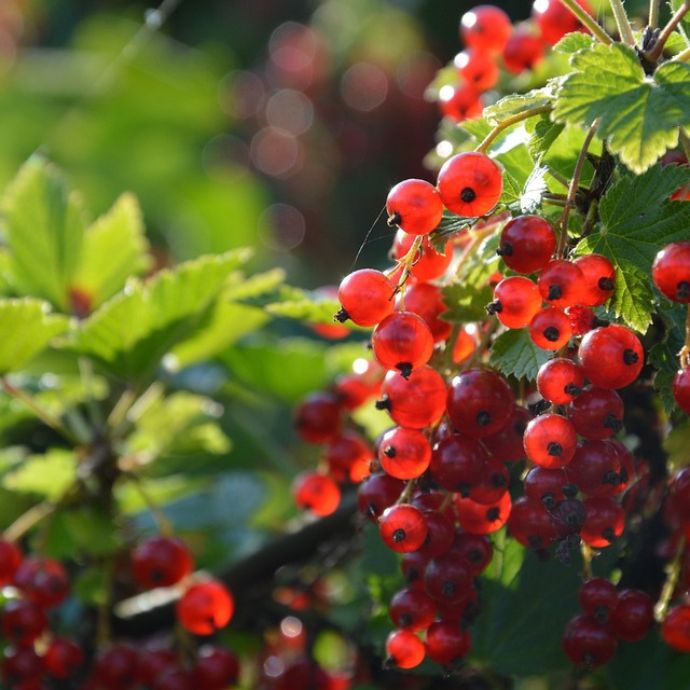Advice & Inspiration
Planting Roses: The Complete Guide

Just got a new rose? Here’s everything you need to know about getting it off to the best start - with expert tips for planting roses and caring for them from our specialist grower, Jack.
Jump to:
- Where to plant
- When to plant
- Planting potted roses
- Planting bare root roses
- Planting roses in pots
- Adding mycorrhizal fungi
- What compost or soil?
- Watering
- Feeding
- Pruning
- Supporting climbing roses
- What to grow with roses
Where to plant roses
Choose a position in direct sunlight, where your rose will get at least six hours of light each day in spring and summer. The best place to plant a rose is in a sheltered site 1m away from other plants or 60cm from other roses.

When to plant roses
Unless the ground is very dry, frozen or waterlogged, you can plant potted roses at any time of year. Bare root roses are only available in the dormant season (November to March) and should be planted as soon as possible after you receive them.
How to plant potted roses
Before removing your rose from its pot, give it a good watering. Prepare a weed and stone free position for it, and dig a hole 40cm wide and 40cm deep. You can add well rotted manure or compost to improve the soil at this point. Remove your rose carefully from its pot and position in the centre of the hole. Fill in the soil and firm it down well before watering in.
How to plant bare root roses
When your roses arrive, soak the roots in a bucket of water for a minimum of two hours. Prepare the soil by removing any weeds and stones, and digging a hole of approximately 40 x 40 cm. Add some well rotted manure or garden compost. Position the rose in the centre of the hole, fill it in and firm down the soil well. Give your new rose a good watering.

Planting roses in pots
If you’re planning to grow your rose in a pot, choose a patio or miniature variety. Most other types do much better in the ground, having long, shallow roots that need plenty of space to spread out. Plant your patio rose in a container at least 25cm deep and wide and check every couple of years to see if it needs repotting. I’ve also had good results growing less vigorous varieties of climbing roses in containers - these will need a larger pot at least 30-45cm deep and wide.

Jack’s top tip: Mycorrhizal fungi
It’s the secret formula. “We would always recommend planting roses with mycorrhizal fungi,” says Jack, “the fungi essentially act as a secondary root system which helps the plant get established and take up nutrients, through a symbiotic relationship between plant and fungi.” This is a natural process that happens beneath the soil in most gardens, but it certainly pays to give it a helping hand - just sprinkle some in the bottom of the planting hole.
What compost or soil is best for roses?
Jack says, “We would always recommend using a good quality rose compost (often referred to as Rose, Tree and Shrub). These composts have been designed and mixed with roses in mind, often having larger base ingredients that are intended for tough roots. They also have the correct balance of nutrients for flowering shrubs and can be used to give the best start to a rose planted out in the garden or a container.”
Watering
Jack’s top tip for any roses is to keep them well watered. “If you allow roses to dry out,” he says, “especially in the grower’s pot, they’re much less productive when it comes to flowering. Moreover, when planting a rose, it is vital to make sure the root ball inside the grower pot is well soaked so that the roses can drink as they establish their roots out into the soil.”
When roses are newly planted, you should water them every 2-3 days, unless you’re planting bare root between November and March, when the weather should be wet enough. As the weather warms up, you should water your roses once a week, but watch out for dry spells during spring and summer. If the flowers start to wilt or droop, it’s a sign that they need more water. Always water your roses at the base of the plant and avoid wetting the leaves, as this can encourage disease.

Feeding
“Roses are a hungry plant,” says Jack, “especially when they are at the point of flowering. We recommend feeding your roses in two ways at different points in the season.”
Winter feeding
This is very important to help replace the nutrients that roses take from the soil. “We very much recommend using farmyard manure as a mulch over winter,” says Jack. “This breaks down and helps to feed the plants throughout the spring.”
Summer feeding
Feeding during summer and when the roses are in flower requires high nitrogen food - and not necessarily the specialist rose food you can buy. “I get my best results from using a good quality tomato feed,” says Jack.
Pruning roses
Deadheading is perhaps the most important part of rose pruning, and simply means cutting off the flower heads after they’re past their best. “It’s essential to encourage a long season of flowers,” says Jack. By doing this, you’ll prevent the plant growing seed heads (hips), enabling it to put its energy into growing more flowers! Roses also need to be pruned to maintain their shape and keep the plant healthy - the best time to do this is in late winter or early spring. Different roses need different pruning methods - find out more in our rose pruning guide.

How to support climbing roses
Climbing roses are vigorous plants and need a lot of support! Train your rose by making a network of wires across your wall or fence, or train on a pergola, arch or through the branches of a large tree. Once the rose starts to grow upwards, you can encourage it to follow the structure you want by tying in the larger branches to the supports. Garden string or plant ties are fine for this, but I use cable ties from the DIY shop.

What to grow with roses
The classic pairing is roses and lavender - it’s a match made in perfume heaven and blue lavenders look great with both pastels and deep reds. Alliums and foxgloves are also a good option - or ornamental grasses for a more contemporary look.
Low growing plants like hardy geraniums and anemones are ideal for underplanting rose bushes, while scented salvia and nepeta provide contrast and keep the aphids away.
For climbing roses, planting a different climber to twine around your rose will provide a colour contrast that’ll bring out the best of both plants. Clematis is a good choice here - pick a variety that flowers in autumn or spring to extend our flowering season, or a summer flowering variety that will bloom at the same time as your rose and give you maximum flower coverage. I love a white jasmine with pink roses - you could also choose a yellow honeysuckle with orange or peach roses or a jewel-toned red or purple clematis for a contemporary colour combination.
Explore more rose garden ideas.




















